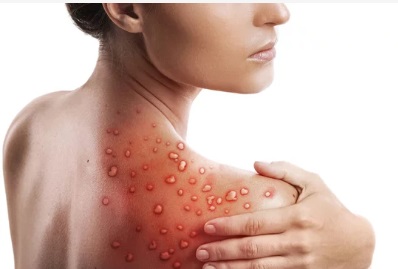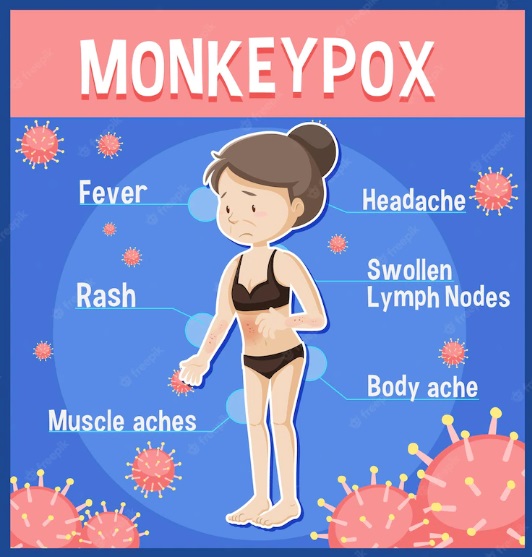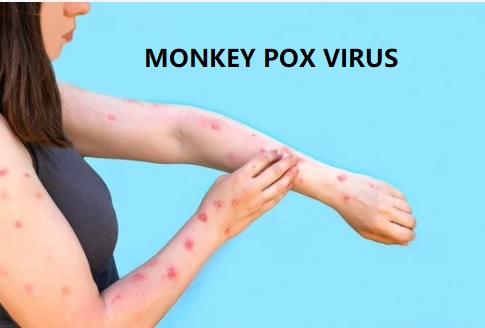INTRODUCTION — ORIGIN OF MONKEY POX VIRUS
It’s May of 2022, and the entire world is betting on one name, which is the MONKEY POX virus.
Though it sounds very familiar and very recent, it is not really so.
Well, it’s because, when you dig up on the history of the monkey pox virus, it drives you way back to 1958.
Yes, that was the first time when the world got to see such a virus, that too in monkeys which were kept for examination in the labs.
Eventually, it spread its arms on mankind which is when the first case of monkey pox virus in a human was seen in the year 1970 in the Democratic Republic Of Congo, which though gradually came to a rest, it happened to reemerge in the year 2017 in Nigeria.
But today is the day we were cautioned about, for us to back upon such an outrageous outbreak.
As per the statistical data, places like Nigeria, North America, Africa, Britain, and especially the west African clad and the Basin clad are known to be the present hotspots of this monkey pox virus.
Apart from the fact that a large number of the human population is being adjourned with this disease, a reasonable number of the animal biome including squirrels, rats, mice, and monkeys have also been affected by the disease.
And because we live in an ecosystem, where we all co-exist with each other, we tend to catch hold of such a disease from an infected animal, or infected human, or sometimes, we ourselves might spread the disease to a healthy animal or a healthy human as well. This is why the name monkey pox virus also comes across as a zoonotic disease — meaning, the exchange of germs between humans and animals.
WHAT CAUSED MONKEY POX VIRUS 64 YEARS BACK FROM TODAY?
As mentioned earlier, the monkey pox virus found in a monkey was an overnight call of emergency that eventually spread everywhere.
This virus belongs to the genus orthopoxvirus and species poxviridae which is known to be the main cause of the disease.
HOW DOES IT LOOK?
The monkey pox virus typically looks like a cluster of boils all over one’s body.

These boils are closely similar to that of the small pox.
But the monkey pox virus is less stressful than the small pox. Therefore, scientists have tried and tested their hands on treating the monkey pox virus with the vaccines made for small pox which turned out to be reasonably successful.
SYMPTOMS OF MONKEY POX?
It feels like tiny raised lumps all around the skin.

This is initially assisted by,
- Fever

- Body pains

- Muscle aches

- Headache

- Dizziness

- Swollen lymph nodes
On some days, the lesions develop in their character and are further assisted by,
- Fever
- Rashes on the palm, face, sole of feet, mouth, eyes and genitalia
In a long run, the advancement in the symptoms happens with the change in the way the lumps look. They predominantly evolve into —
- MACULES: plain faded rashes
- PAPULES: slightly raised boils
- PUSTULES: tiny bumps with yellow-colored fluid inside them
- VESICLES: bumps with clear colorless fluid.

HOW DOES MONKEY POX SPREAD?
Well, typically for a monkey pox to spread from a —-
- human to human,
- animal to animal,
- animal to human or even
- from humans to animals………….both the body system have to come in contact with each other.
Now, this contact can be through various means like—
- directly through the SKIN SURFACES,
- through externally open cavities that connect to your internal system like that of your mouth, nose, eyes, ears, and so on,
- through any HARM/BITE/SCRATCH caused by an infected animal,
- EATING HABITS,
- through CONTACT WITH THINGS that are used by an infected person or
- sometimes it can merely enter one’s body due to SEXUAL PRACTICES.
1) Through direct contact:-
Our skin is like the borderline defense system of our body which thus makes the first attempt to resist any kind of harmful pathogens. But, this is not proven true for all.
Here’s a situation where your skin touches the blood, body fluids, mucous of the skin, or the sneeze droplets of an infected person and unfortunately your skin fails to cease such a pathogen, then they obviously break the skin defense mechanism and enter our body directly causing monkey pox virus.
2) Through body cavities:-
The nose, eyes, mouth, and ear link up various regions of our body from the outside to the inside.
Thus, when anybody already facing monkey pox virus tends to sneeze or talk, the germs from their mouth can possibly enter your system through such open cavities.
3) Through animal bite:-
This is a situation that is concerned about the spread of monkey pox virus by animals.
It says that any kind of harm in terms of a bite or a scratch from any of the infected animals can lead to the virus infection.
4) Eating habits:-
When I say eating habits, it’s about your preferential eating habits.
For example:- if you are a meat lover and little did you know that the meat you relished was infected by the virus, that is when you realize that you are a week close to catch the virus.
5) Through contact with things around you:-
If not directly from body to body, sometimes the things touched and used by an infected person can transfer the infection to you if in any case, you come in contact with it.
6) Through sexual practices:-
The recent bulletins state a fact that the major part of the contribution to the hike of monkey pox virus cases is mainly due to sexual practices.
IS MONKEY POX DANGEROUS ? or
CAN MONKEY POX VIRUS RESULT IN THE DEATH OF THE PATIENT??
Well, the answer is yes but its very very very rare and it can occur only under a few circumstances where —-
— the patient is extremely immune-compromised
— too young or too old to handle,
— negligence
— long-run history of the infection.
TESTS FOR MONKEY POX VIRUS?
Mostly, any of us would step in to the doctor’s clinic with some sort of a medical history depending on ——
- what you ate,
- whom did you recently meet,
- where did you go and so on……………. that gives the possibilities of monkey pox virus in you.
This is followed by analyzing the presuming symptoms that are very much visible, like lumps, pustules, rashes, papules, and so on.
With respect to these symptoms, your doctor would go for the diagnosis of the virus through laboratory tests.
Laboratory tests include —–
- inoculation of the fluid that is present inside a lesion, or
- inoculation of the dry scabs (dried lesions) onto a culture media.
The growing cultures are further tested for the presence of viruses using the polymerase chain reaction method (PCR Test).
- Apart from this, sometimes the diagnosis is also conducted by scraping the skin tissues from the infected area and testing them for the respective virus.
TREATMENT OF MONKEY POX:-
After looking through your medical history and diagnostic reports, your doctor would stimulate a specific set of treatment criteria for you.
Mostly, the treatment would consist of SYMPTOMATIC TREATMENT and basic medicines to combat the severity.
Otherwise, generally, the monkey pox virus will suppress on its own.
You can also be recommended to take VACCINES for MONKEY POX like:
1) VACCINIA VACCINE:
It is a vaccine that was originally made for small pox which seemed to be effective for ma key pox virus as well.
2) VACCINIA IMMUNE GLOBULIN (VIG):
It is a protein vaccine that is used to treat the possible complications caused by administering the vaccinia vaccine.
Also, a good and healthy body with a superior immune system is very important for the good progress in your treatment for it.
In case of monkey pox virus in animals, the antiviral veterinary medication is used to treat them.
PREVENTION OF MONKEY POX:-
- Avoid getting in contact with infected people
- Check on the quality of food before you consume them
- Stay away from rats, mice, and other animals
- Don’t be very negligent about your health
TAKE AWAY:-
Lastly, I would say that the monkey pox virus is not a very dangerous disease.
Having said that, it is also very important to take necessary precautions and visit the doctor whenever you cite any symptoms with regard to it.
We ought to be responsible enough for ourselves as well as the people around us.
THANK YOU
MEDICAL ADVICE DISCLAIMER:
This blog including information, content, references, and opinions is for informational purposes only.
The Author does not provide any medical advice on this platform.
Viewing, accessing, or reading this blog does not establish any doctor-patient relationship.
The information provided in this blog does not replace the services and opinions of a qualified medical professional who examines you and then prescribes medicines.
And if you have any questions of medical nature, please refer to your doctor or the qualified medical personnel for evaluation and management at a clinic/hospital near you.
The content provided in this blog represents the Author’s own interpretation of research articles.
